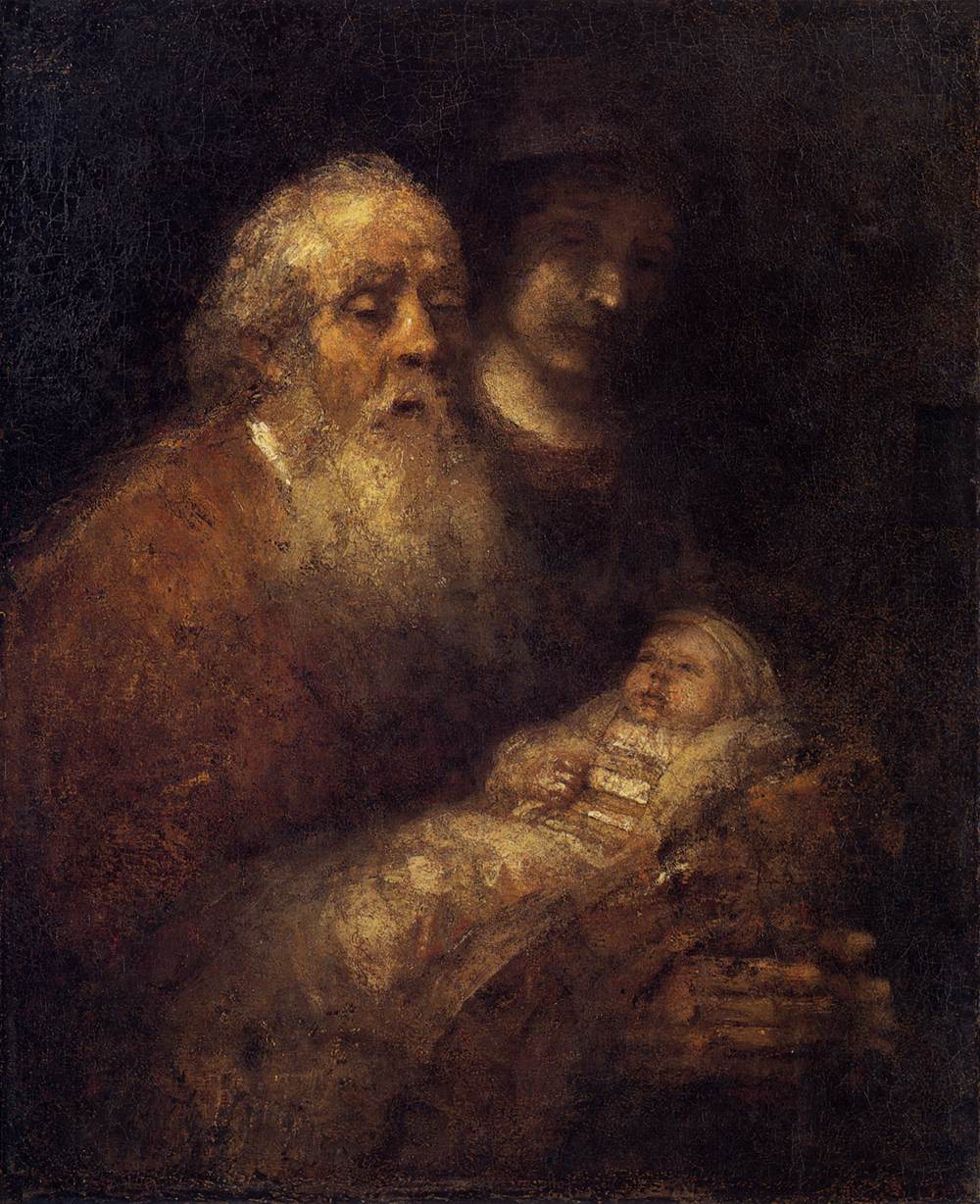Three Cornelias: Navigating Loss With the Bible & Rembrandtಮಾದರಿ

Simeon In The Temple (c.1669)

Rembrandt's final painting, Simeon in the Temple, was found unfinished in his studio the day after his death. The painting is believed to have been inspired by an event seven months earlier, when Rembrandt stood as the godfather for his granddaughter Titia's baptism. Titia's father, Titus—Rembrandt’s only surviving child from his marriage to Saskia—had died from the plague before her birth. Shortly after Titia was born, her mother also passed away. For Rembrandt, Titia was all that remained of his love with Saskia.
Rembrandt’s grief after Titus’ death was deep. His painted works from this period, including Simeon in the Temple, reflect a longing for something beyond what this world can offer—a longing for divine peace and fulfillment, a longing for a love that would not fade, a love that could not be taken away. This seems to be the same longing of Simeon in the gospel of Luke, who had waited a lifetime for the Messiah, and when holding the infant Jesus in his arms, declared,
“Lord, now you are letting your servant depart in peace, according to your word; for my eyes have seen your salvation” (Luke 2:29-30 ESV).
Simeon's waiting was over. And in his aged eyes, there was not only the peace of fulfillment but the peace of release. I wonder if, for Rembrandt, who many have said painted himself as Simeon in this picture, he looked at Titia as the fulfillment of his own desires for lasting progeny.
In this way, Simeon represents the moment when all the longings of a lifetime converge in the embrace of Jesus. What Simeon could not have known is that Jesus, the fulfillment of God’s promise, would one day take on ultimate loss Himself—bearing the weight of grief, suffering, and death for the sake of all who suffer.
In the depths of his own loss, Rembrandt may have found in Simeon’s story a reflection of his own journey: years of waiting, enduring, and aching for the promises of God to be fulfilled. But Simeon knew that peace is found not in the absence of pain, but rather the embrace of something greater.
For Rembrandt, Titia was a living symbol of that promise. Just as Simeon held the promise of salvation in his arms, so Rembrandt held a new generation, a new life, that reminded him of the love he had lost, but also the love that still remained.
What are you waiting for God to fulfill in your life? How can you hold onto God’s promises, even in the face of deep grief or disappointment? How might God be inviting you to see His faithfulness in the midst of your sorrow, as Rembrandt found in Titia and in his third Cornelia?
ದೇವರ ವಾಕ್ಯ
About this Plan

This devotional reading plan invites you to walk through the depths of grief and hope alongside the biblical story and the hauntingly honest art of Rembrandt. Through the lens of his personal losses—including two daughters (both named Cornelia) and a son (unnamed) who died in infancy, and the complicated joy of a third daughter Cornelia, who survived into adulthood—we explore how faith, scripture, and creativity can speak into our sorrow. Let Rembrandt’s journey and the truth of God’s Word guide you through lament, healing, and the quiet strength of enduring love.
More
ವೈಶಿಷ್ಟ್ಯದ ಯೋಜನೆಗಳು

Fearless & Free: Overcoming Fear With Faith a 5-Day Plan With Kelly Roberson

Adventure in Evangelism

Who Is Jesus?

Not Giving Into Fear and Peer Pressure: Devotions for Girls (I Am Fearless)

Forgive Them Too??

When God Is Silent: Finding Faith in the Waiting

Cornerstone: Rebuild, Renew, Restore

God Gives Good Gifts to Everyone

Jesus Never Said ‘Hustle’: Finding True Rest in a Burnout World
